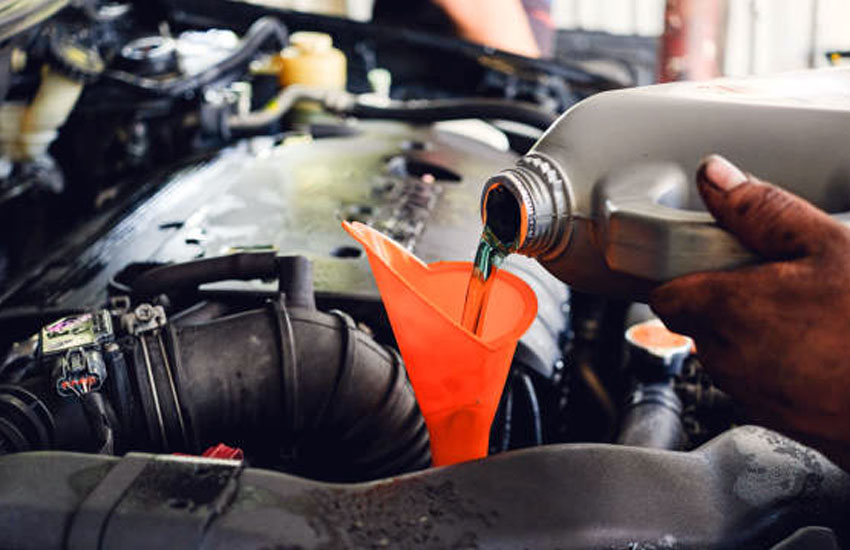As an Amazon Associate, I earn from qualifying purchases at no extra cost to you.
What Does 1-Speed Constantly Variable Transmission Mean?
Welcome, friend! Imagine chatting over a cup of coffee while I unravel the mystery behind 1-speed continuously variable transmissions (CVTs). It might sound fancy and intimidating, but trust me, by the end of this guide, you'll not only understand it but also be able to explain it to someone else like a pro. So, let's dive in and decode this intriguing automotive concept together.

The Basics of 1-Speed CVT: A Simplified Overview
First things first, let's break down the jargon. What does 1-speed CVT mean? A 1-speed continuously variable transmission is an innovative type of automatic transmission that doesn’t rely on traditional gears like most vehicles do. Instead, it uses a system of pulleys and belts to create a seamless range of gear ratios. This provides smoother acceleration, better fuel efficiency, and a more comfortable ride.
Now, let's dive deeper and make this as relatable as possible.
What Makes a CVT Unique?
Think of a regular car transmission as a staircase. You've got distinct steps (or gears) to move up or down as you accelerate or decelerate. Each step is a fixed gear ratio. While functional, this stepping can sometimes feel jerky or inefficient because the car has to “jump” from one gear to the next.
A CVT, on the other hand, is like an escalator. There are no steps, just a smooth ride up or down. This is because it continuously adjusts the gear ratio to match the speed and power needed. The term “1-speed” essentially means that the transmission operates without fixed gears—it's one continuous, fluid motion.
How Does a CVT Actually Work?
Here's where the magic happens. A CVT relies on a system of two pulleys connected by a belt or chain. One pulley is attached to the engine, and the other is connected to the wheels. By adjusting the diameter of these pulleys, the CVT changes the gear ratio.
- Pulley Mechanics: Imagine squeezing and stretching a rubber band. One pulley widens while the other narrows, which changes the effective size of the “gears.”
- Infinite Ratios: Unlike traditional gearboxes with a limited number of gears (say, 6 or 8), a CVT offers an infinite range of ratios between its lowest and highest settings. This makes it incredibly efficient and adaptable.
- Smooth Transition: The absence of fixed gears means no jarring shifts or pauses during acceleration.
Why is it Called a 1-Speed CVT?
The term “1-speed” can be misleading because it doesn't mean the vehicle has only one gear. Instead, it refers to the lack of traditional, discrete gears. The transmission operates on a single, continuously variable system, eliminating the need for shifting altogether.
If you've driven a car with a CVT, you might notice that the engine revs up and stays there while the car's speed increases—a unique experience compared to the rise-and-fall rhythm of a traditional gearbox.
Benefits of a 1-Speed CVT
- Fuel Efficiency: A CVT keeps the engine running at its most efficient RPM (revolutions per minute) for any given speed, which can significantly boost fuel economy.
- Smooth Driving Experience: No more jerky shifts or awkward pauses as the car changes gears.
- Reduced Wear and Tear: With fewer moving parts compared to a traditional transmission, CVTs often experience less mechanical strain.
- Adaptability: Whether you're cruising on the highway or crawling in city traffic, the CVT adjusts seamlessly.
Challenges and Criticisms
Of course, no technology is perfect. While CVTs are innovative, they've faced some criticism:
- Driving Feel: Some drivers miss the “connected” feeling of traditional gear changes.
- Durability Concerns: Early CVTs had reliability issues, though modern versions have improved significantly.
- Cost of Repair: If a CVT does fail, repairs can be pricier due to its complex design.
Where Will You Find CVTs?
CVTs are common in smaller cars and hybrids, where efficiency and smoothness are priorities. Brands like Toyota, Honda, and Subaru have embraced CVTs for their popular models. You'll also find them in some scooters and ATVs, making them versatile across different vehicle types.
Comparing CVT to Other Transmissions
Here's a quick breakdown to highlight how a CVT stacks up:
- Manual Transmission: The classic stick shift gives drivers full control but requires constant gear changes.
- Traditional Automatic Transmission: Uses a set number of gears, offering convenience but less efficiency.
- Dual-Clutch Transmission (DCT): Provides quick gear changes for performance-oriented driving but can be jerky at low speeds.
- CVT: Prioritizes smoothness and efficiency, ideal for everyday driving and fuel savings.
The Future of CVTs
As the auto industry shifts toward electric and hybrid vehicles, CVTs are likely to become even more prevalent. Their efficiency and compatibility with electric drivetrains make them a natural fit for the next generation of cars.
Are These Questions in Your Mind?
Is it difficult to drive a car with a CVT?
Not at all! If you've driven an automatic car before, a CVT will feel very similar—just smoother.
Can a CVT handle high-performance driving?
While CVTs are great for efficiency, they're not typically used in high-performance sports cars. However, advancements in technology are narrowing this gap.
Do I need special maintenance for a CVT?
Yes, CVTs require specific fluid types and regular maintenance to ensure longevity. Always consult your car's manual.
Is it true that CVTs are less durable?
Modern CVTs have improved durability, but early versions had issues. Regular maintenance is key to avoiding problems.
Can a CVT car tow heavy loads?
CVTs aren't ideal for heavy towing because they're designed for efficiency rather than brute strength. Check your vehicle's specifications.
Is it worth buying a car with a CVT?
If fuel efficiency and a smooth ride are priorities, then yes! Just ensure you're comfortable with the unique driving experience.
Do I need to break in a new CVT car?
Like any car, it's a good idea to follow the manufacturer's guidelines for a break-in period to ensure optimal performance.
Can I use regular transmission fluid in a CVT?
No, CVTs require specific fluid types. Using the wrong fluid can damage the transmission.
Is a CVT the same as an automatic transmission?
Not exactly. While both are automatic, a CVT uses a continuous range of gear ratios rather than fixed gears.
Do I need to warm up a CVT in cold weather?
Warming up the engine and transmission fluid in extreme cold can be beneficial, but modern CVTs are designed to handle most conditions effectively.
I hope this guide has made CVTs less of a mystery and more of a fascinating innovation in the world of cars. Whether you're a curious driver or someone exploring a new car purchase, understanding 1-speed CVTs gives you an edge in making informed decisions. Now, go impress your friends with your newfound knowledge!


